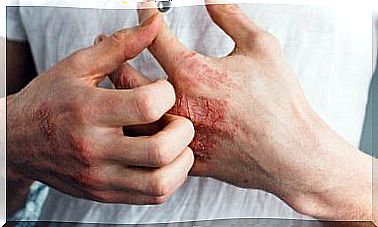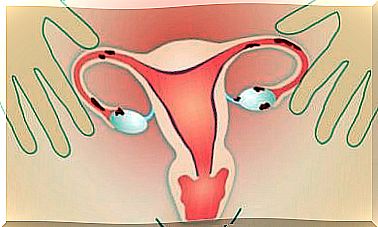Vertigo: Symptoms, Causes And Treatment
Vertigo is a sudden spinning sensation inside your head. In turn, it is perceived as a precipitation into the void, but in reality it is not. Although the body seems to move, the truth is that it is still in the same position.
Although it can be sporadic, there are those who suffer it frequently. If so, it is advisable to consult a doctor, since it may be related to diseases of greater care. Information published in the medical journal Mayo Clinic Proceedings suggests that this symptom represents between 2 and 3% of emergency visits.
However, its causes are diverse and its diagnosis can be difficult, since it is often mistaken for common dizziness. Therefore, below we explain what its main causes are, how to recognize it and what treatments are available.
What is vertigo?
Some describe vertigo as a sensation in which the body seems to move, even when in a resting position. Also, it may seem that things around you are moving. The movement described is in the form of rocking or sliding.
In any case, it is a disorder caused by an alteration of the vestibular system, whose function is to regulate the sense of balance and movement. That is, it is in charge of placing the body in the environment.
This system is located in the inner ear and receives information from both vision and different proprioceptive sensors in the body. Therefore, it is essential to know how to differentiate vertigo from dizziness.
Dizziness consists of an alteration of balance, but it is not always related to a lack of control in the vestibular apparatus. Both situations are often accompanied by feelings of instability, nausea, and other symptoms.

What types of vertigo are there?
Vertigo is a complex pathology that can have different causes. In general, there are two main types of vertigo: central and peripheral. The central is produced by an alteration in the area of the brain that is responsible for processing information related to movement.
For its part, peripheral vertigo is caused by a problem in the inner ear or in the nerve that carries sensations from the vestibular apparatus to the brain. This type is much more frequent, since almost 93% of cases are for this reason.
In the case of central vertigo, the causes are more limited. For example, it may be due to a stroke or a brain tumor. Similarly, it is a common symptom in people with multiple sclerosis.
Peripheral vertigo
The most common cause of peripheral vertigo is a condition called benign paroxysmal positional vertigo. As its name suggests, it is a disease that is rarely serious. The problem is that it can be very annoying, since it increases the risk of falls.
In this type, the episodes of dizziness are usually brief. Symptoms often appear when the position of the head is changed. For example, when rolling over in bed or tilting the head down.
Another cause is Menière’s disease, a chronic pathology of the inner ear. People who suffer from it, in addition to vertigo, usually have a progressive loss of their hearing ability.
What symptoms appear?
As with dizziness, vertigo is accompanied by a series of unpleasant sensations that can become very uncomfortable. For example, it is often associated with nausea and vomiting. This can lead to loss of appetite.
On the other hand, stability and perception of posture and movement are altered . In this way, the risk of falls and trips while walking is greatly increased. The headache can become very severe and disabling.

How can vertigo be treated?
Treatment options for vertigo depend on the cause. In many cases there is no specific treatment. Only supportive measures can be taken to calm the symptoms; for example, staying at rest until the episode subsides.
Also, it is recommended to take antiemetic medications to decrease nausea and vomiting. On the other hand, in benign paroxysmal positional vertigo, there is an effective treatment for most cases.
It is a technique called canalicular repositioning. It consists of mobilizing the patient’s head to reposition some particles that are part of the vestibular apparatus, called otoliths. They are the cause of this type of vertigo.
Consulting the doctor is important
The symptoms of vertigo can be confused, in the first instance, with another pathology. Therefore, given its clinical manifestations, it is best to go to the doctor to receive a proper diagnosis. After determining its origin, the professional will guide you towards the best treatment.









